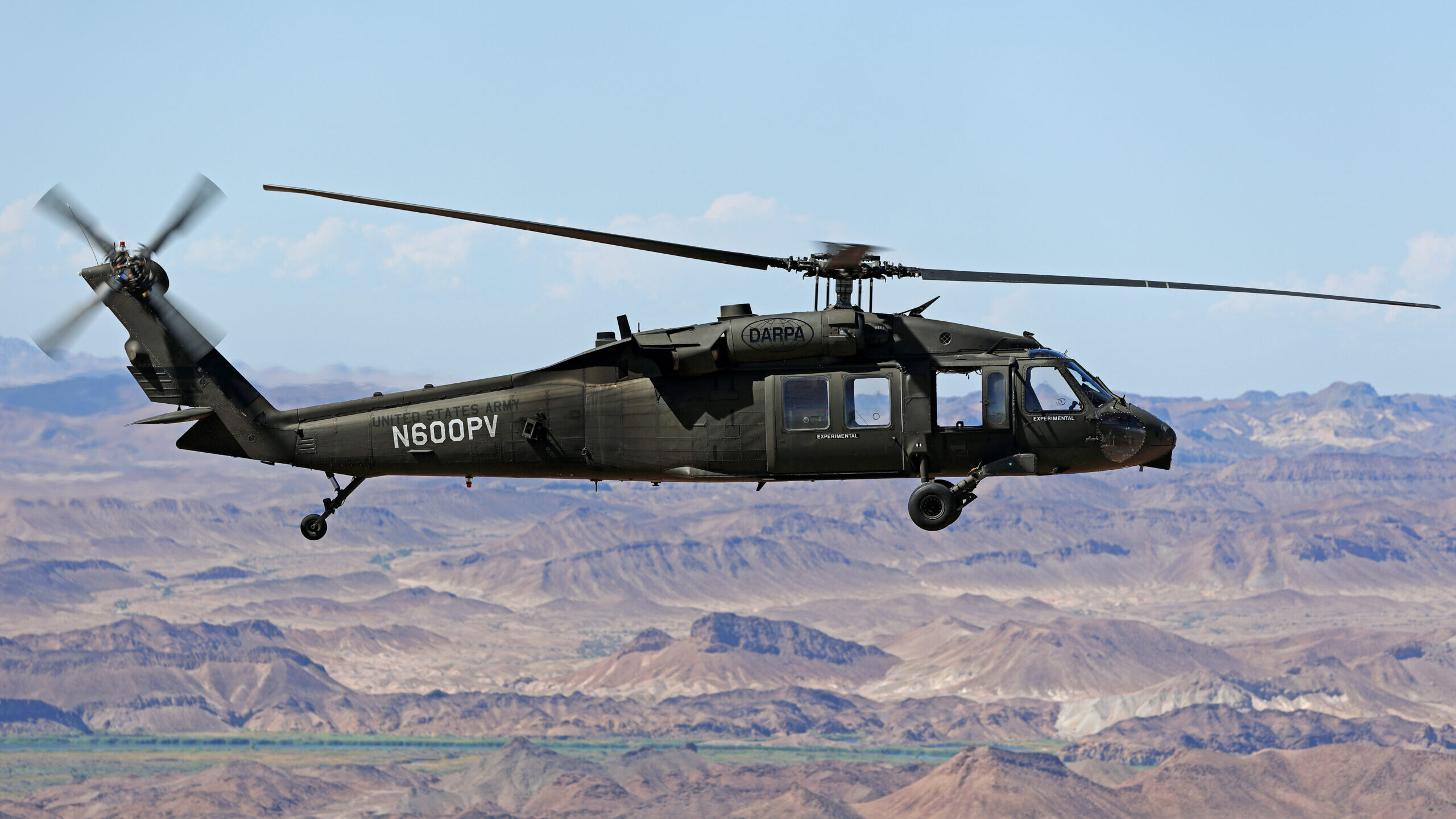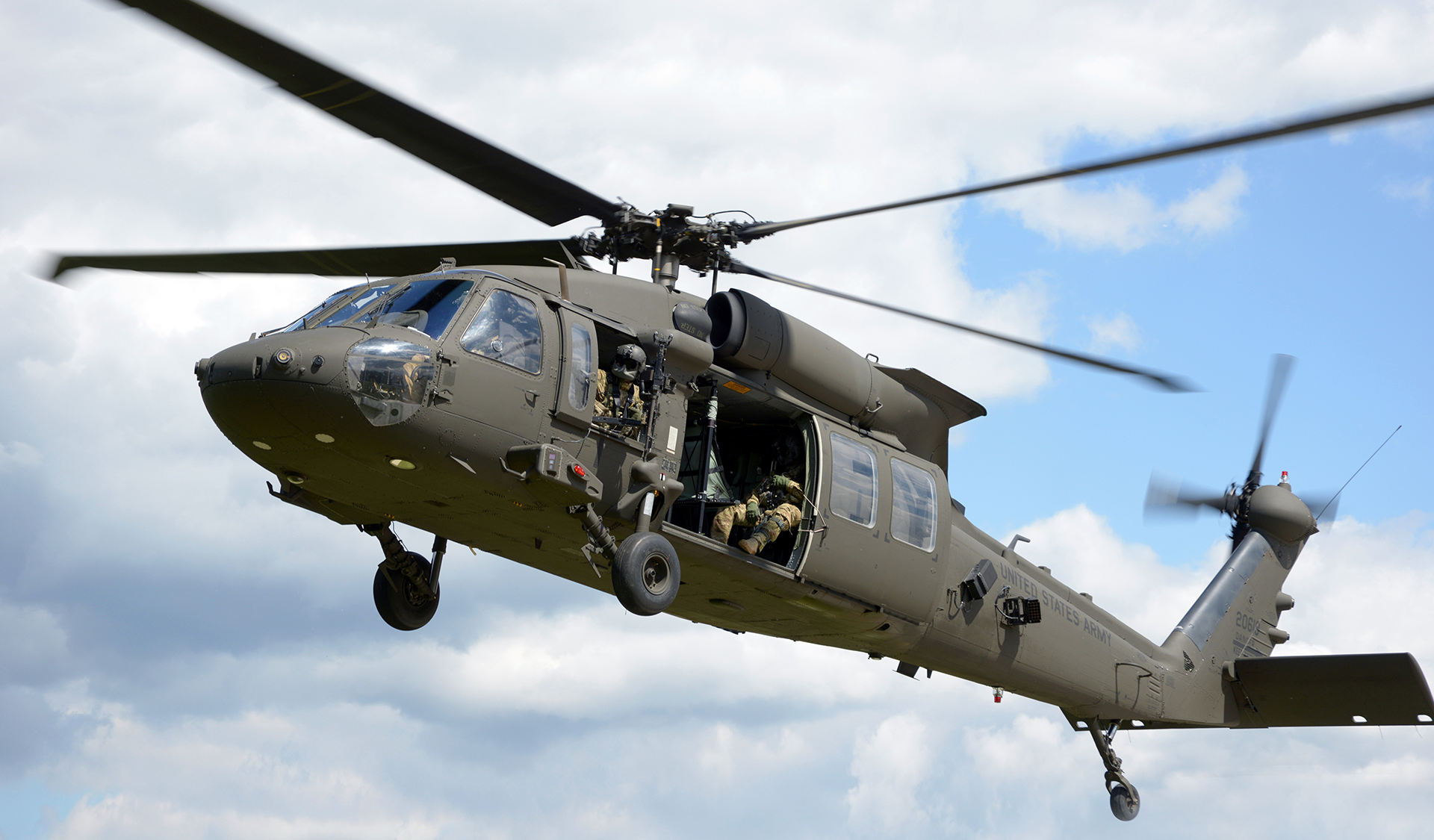Explore the Advanced Features and Capabilities of the UH 60 Helicopter
Explore the Advanced Features and Capabilities of the UH 60 Helicopter
Blog Article
UH-60: Developments in Modern Helicopter Style
The UH-60 helicopter stands as a standard in contemporary aviation, showcasing significant advancements in design and innovation that cater to the developing demands of army procedures. As we discover the evolution and vital innovations of the UH-60, it ends up being vital to think about how these developments affect not just present applications but likewise the future landscape of helicopter layout.

Evolution of the UH-60
The development of the UH-60 Black Hawk helicopter represents a considerable turning point in aerospace design and military aeronautics. Introduced in the late 1970s, the UH-60 was made by Sikorsky Airplane to fulfill the United States Army's demand for a functional utility helicopter efficient in performing a selection of objectives. Its design stressed maneuverability, rate, and toughness, setting brand-new standards for functional performance.
The UH-60 includes a distinctive four-blade blades system, which enhances lift and security, allowing it to run efficiently in varied atmospheres. Its airframe is created from sophisticated composite products, adding to a decrease in weight while maintaining architectural integrity. The helicopter's layout also includes improved the rules of aerodynamics, which improves fuel efficiency and enhances array.
Over the years, the Black Hawk has actually undergone several upgrades to boost its abilities, consisting of improved engines, advanced trip control systems, and modular systems for simple upkeep and adaptability. The helicopter's capability to execute missions ranging from army transportation to medical emptying has actually solidified its function as a foundation of U.S. armed forces procedures. The UH-60 Black Hawk stays a prime example of exactly how innovation in helicopter style can significantly influence military efficiency and operational versatility.
Advanced Avionics Solutions
Advancements in avionics systems have changed the capabilities of modern-day helicopters like the UH-60 Black Hawk, enhancing operational performance and situational awareness (UH 60). The combination of advanced avionics permits improved interaction, trip, and navigating monitoring, making the UH-60 more flexible in varied objective accounts
Among the crucial attributes is the advanced digital cockpit, which uses multifunction display screens that provide real-time data, making sure pilots have prompt access to vital trip details. This streamlining of information reduces pilot workload and improves decision-making processes throughout facility procedures. Additionally, the consolidation of GPS and inertial navigating systems makes it possible for accurate positioning and course preparation, boosting goal implementation in difficult atmospheres.
Furthermore, advanced avionics systems boost communication capacities with secure data web links and voice communication systems, enabling smooth control with ground pressures and various other airplane. The integration of automated flight control systems further adds to improved stability and control, specifically in unfavorable climate condition or during low-altitude maneuvers.
Engine and Efficiency Enhancements
Engine performance in modern-day helicopters has taken a substantial leap onward, driven by developments that boost power, effectiveness, and reliability. At the leading edge of these innovations is the adoption of even more effective turboshaft engines, especially those using advanced materials and modern technologies that enable higher temperature level tolerances and enhanced drive capabilities. The UH-60 Black Hawk, for example, uses the T700-GE-701C engine, which includes a dual-channel, full-authority digital engine control system. This system improves efficiency while maximizing fuel usage and minimizing upkeep needs.
Moreover, the integration of engine health and wellness surveillance systems permits why not try this out real-time diagnostics and anticipating upkeep, considerably enhancing functional integrity. These systems not just sharp staffs to possible issues before they become important but likewise assist in extra reliable maintenance scheduling, thereby decreasing downtime.

Products and Structural Innovations
Recent growths in materials and architectural layout have reinvented modern-day helicopter construction, enhancing both performance and toughness. The introduction of sophisticated composite products, such as carbon fiber reinforced polymers, has substantially reduced weight while preserving structural stability. This change not just boosts gas efficiency however likewise raises payload capability, permitting helicopters like the UH-60 to execute even more varied goals.
In addition, innovations in light weight aluminum alloys and titanium components have actually added to improved resistance to deterioration and fatigue, extending the life-span of critical airframe components. The critical usage of these materials has actually caused a reduction in maintenance needs and enhanced overall functional readiness.

Additionally, the integration of computer-aided layout (CAD) and additive manufacturing modern technologies has enabled a lot more helpful hints more light-weight frameworks and complicated geometries, optimizing the wind resistant performance of helicopter styles. These advancements assist in rapid prototyping and production, permitting producers to react swiftly to advancing mission demands.
Safety and Survivability Attributes
Safety and survivability attributes in modern helicopter style have actually ended up being extremely important, reflecting the boosting needs for mission efficiency in tough environments. The UH-60 Black Hawk, a remarkable example, incorporates advanced innovations to boost crew and traveler defense. Among the most vital innovations is the incorporation of crashworthy fuel systems created to decrease the danger of fire throughout influence. Additionally, the airframe is built with enhanced materials that take in and dissipate power, additional shielding owners in the event of a crash.
The helicopter additionally utilizes a ballistic security system, that includes armored crew seats and vital systems shielding, reducing susceptability to view website tiny arms fire and shrapnel. Improved situational understanding is accomplished through advanced avionics and sensing unit modern technologies, enabling pilots to discover and prevent risks effectively.
Moreover, the assimilation of redundancy in important systems-- such as double engines and multiple trip control channels-- guarantees continued procedure also if one system fails. The UH-60 is equipped with innovative emergency situation flotation devices, boosting survivability in water touchdowns. Collectively, these attributes not just enhance the security of personnel yet additionally boost objective success prices in aggressive environments, demonstrating the dedication to excellence in helicopter design.
Verdict
The UH-60 helicopter stands for a considerable development in modern-day air travel technology, including ingenious materials, innovative avionics, and robust safety and security functions. Its development mirrors a dedication to enhancing efficiency and functional effectiveness while making sure pilot and team survivability. The combination of lightweight compounds and advanced navigating systems highlights the helicopter's adaptability in different army objectives. Overall, the UH-60 serves as a criteria for future developments in helicopter layout, symbolizing resilience and convenience in contemporary armed forces operations.
The UH-60 helicopter stands as a standard in modern aviation, showcasing significant improvements in layout and modern technology that provide to the evolving demands of military operations. As we explore the evolution and key developments of the UH-60, it ends up being crucial to take into consideration just how these growths affect not just present applications however likewise the future landscape of helicopter design.
Introduced in the late 1970s, the UH-60 was designed by Sikorsky Airplane to fulfill the United States Military's requirement for a flexible utility helicopter capable of performing a selection of goals. The UH-60 Black Hawk stays a prime example of how innovation in helicopter layout can dramatically influence armed forces efficiency and operational adaptability.
On the whole, the UH-60 offers as a standard for future advancements in helicopter design, embodying strength and adaptability in contemporary military procedures.
Report this page